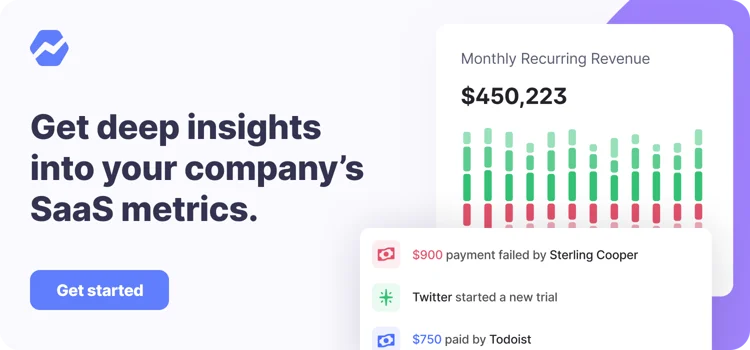Table of Contents

We didn’t have much of a website. We didn’t have a pricing page. We didn’t have the ability for people to check out. But most importantly, we didn’t have time to waste.
We needed to start selling Demio and generating revenue as soon as possible.
So, we came up with the idea of selling prospects individually through demos. It seemed like a natural fit–and it was.
We could do the demos live on Demio so our prospects could see and experience the platform firsthand without us needing to offer any kind of free trial.
We haven’t looked back
In the past 1.5 years, we’ve done thousands of personal demos to get and keep customers for Demio. We’ve learned a tremendous amount about our customers, our product, common objections, and the language needed to speak to our target audience.
We’re currently doing 3–10 demos per day, Monday through Friday, and it’s easily the most important, most consistent growth driver for our business.
On average, we’re closing about 30%–40% of our personal demos that show up. So, out of every 10 demos, we’re getting 3–4 new customers.
While our time is extremely valuable, as founders trying to do a million things, our #1 priority is spending 15–20 minutes on a demo call if we have the chance. It brings in revenue, it brings in customers, and it keeps Demio growing.
Demos help us build better relationships with our customers, which has led to more referrals, new affiliates, and stickier customers.
So, to us, it doesn’t matter if the demo is with a prospective or existing customer; either way, it’s worth the time.
For that very reason, we’re always looking for new ways to promote personal demos. As of right now, there are 3 main ways we’re promoting demos.
Method #1: $50 in credits on our homepage
We wanted to give website visitors a good reason for jumping on a demo, so we came up with the idea of offering $50 in Demio credits to anyone who took the time.
This works great for a few reasons:
- We don’t apply the credit until after they sign up, so we’re still getting revenue from day 1, unlike a free trial.
- It increases the chances they will be a customer for at least 60 days, since the free credit is applied to the second billing. This gives the customer more time to get onboarded into the system.
- It provides incentive for visitors to sign up for a demo, but it doesn’t cost us anything unless they decide to become a customer.
- Not totally proven, but I think it puts the prospect in the frame of mind of “I’m doing this demo with the intention of signing up and getting $50 in credits”.
- It encourages existing customers to schedule a demo in order to get access to the free credits.
We promote this $50-credit offer on our homepage:
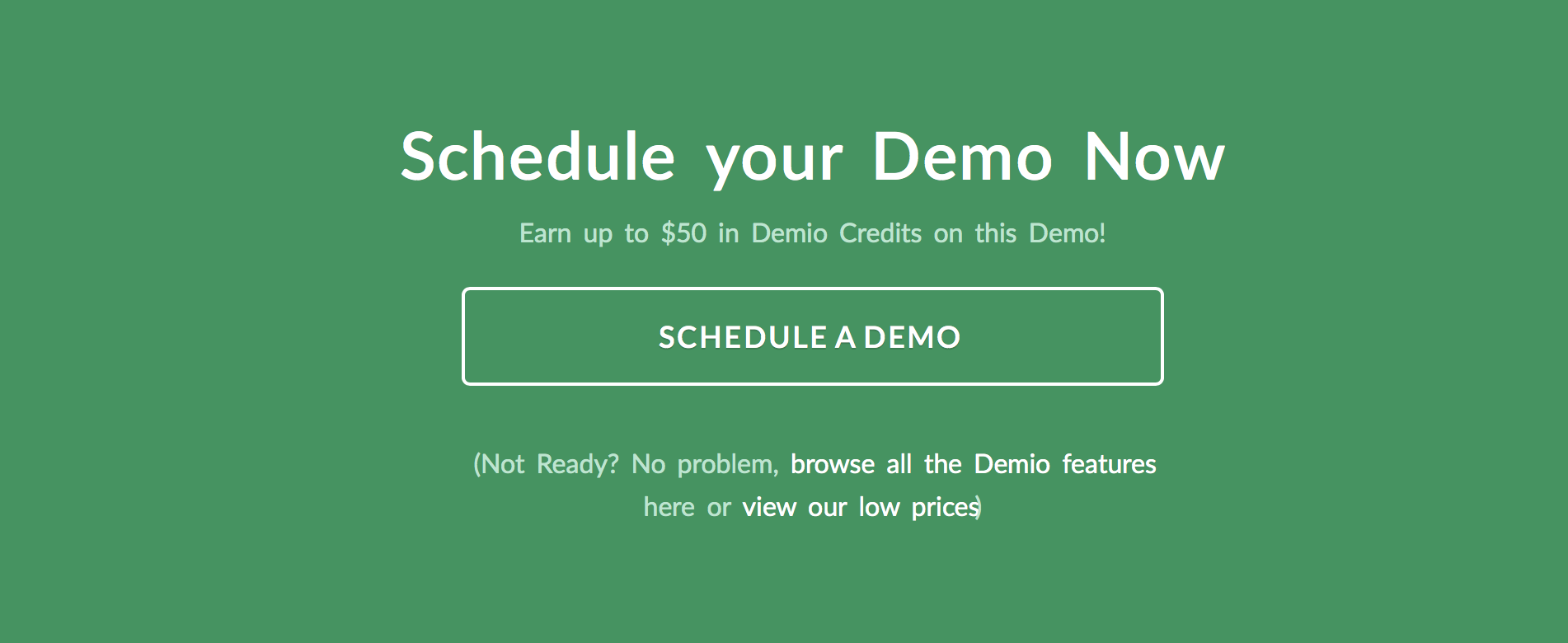
And on other important pages of our website, including our pricing page:

We also use Intercom Engage to send an automated chat message to visitors on the website. In this message, we promote the 1-on-1 demo sign up for $50 in Demio credits:
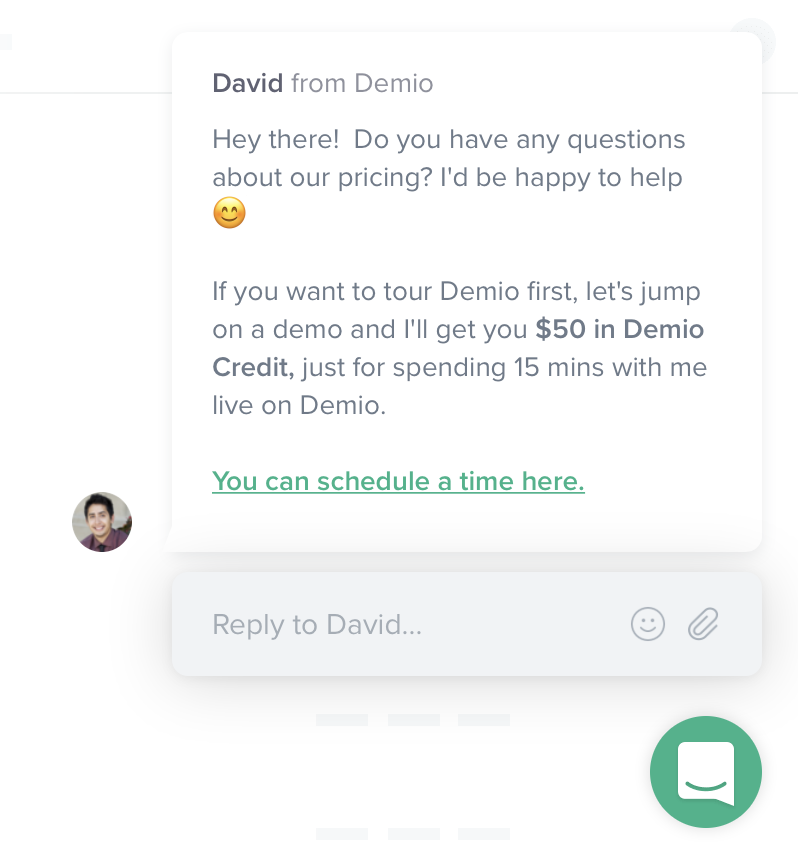
Between the homepage and the automated chat message, this is where the majority of our demo sign ups are coming from.
Method #2: Follow up series after our automated demo
At the top of our website, we’re promoting an automated demo of our platform, using Demio, of course.
In the past, we have directly promoted a link to our calendar to sign up for a personal demo, but we felt a lot of traffic was falling through the cracks.
The new strategy allows us to capture the name/email of about 5% of visitors hitting our website. They can then join the automated demo instantly and watch it while they have time, instead of planning to do it at a later date.
This allows us to qualify more prospects and actually capture their lead information, so we can follow up with them later.
At the end of the automated Demio, we make a call to action to either sign up for a free trial or to sign up for a personal demo if the prospect still has questions.
If the prospect doesn’t complete either of those actions, they’re entered into our follow-up series inside of Active Campaign, with the goal of pushing them into a free trial and then a personal demo if they still haven’t signed up.
We’re using the Demio Automation Rules feature to segment registrants into different campaigns based on if they left early or completed the demo:

In the first email, we introduce Demio as a company and explain our mission. We also send them a link to our automated demo.

In the next couple of emails, we start to promote the 14-day free trial for Demio. If no action has been taken, the contact is then moved into our nurture sequence.
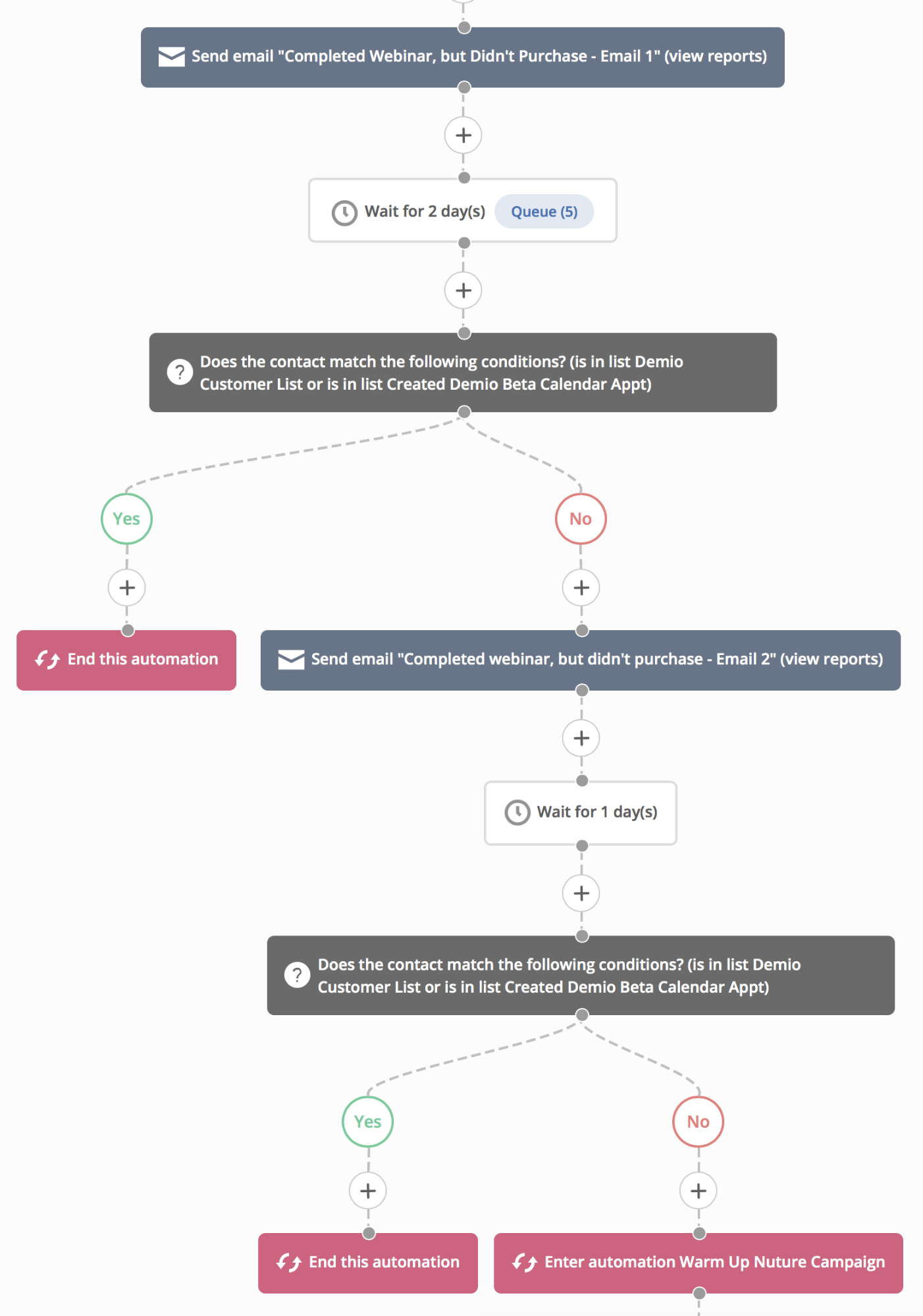
In the nurture sequence, we send a total of 4 emails with the sole intention of getting them to sign up for a 1-on-1 demo.

Method #3: Email campaign for paid traffic leads
We’re not doing a ton of paid advertising, but we’ve been able to put together a few profitable campaigns.
Our best performing lead gen campaign was for our “Top 20 Webinar Ad Templates”, and we ran it on Facebook to generate leads for around $4–$5.

We’re using a simple, barebones landing page to capture the leads:
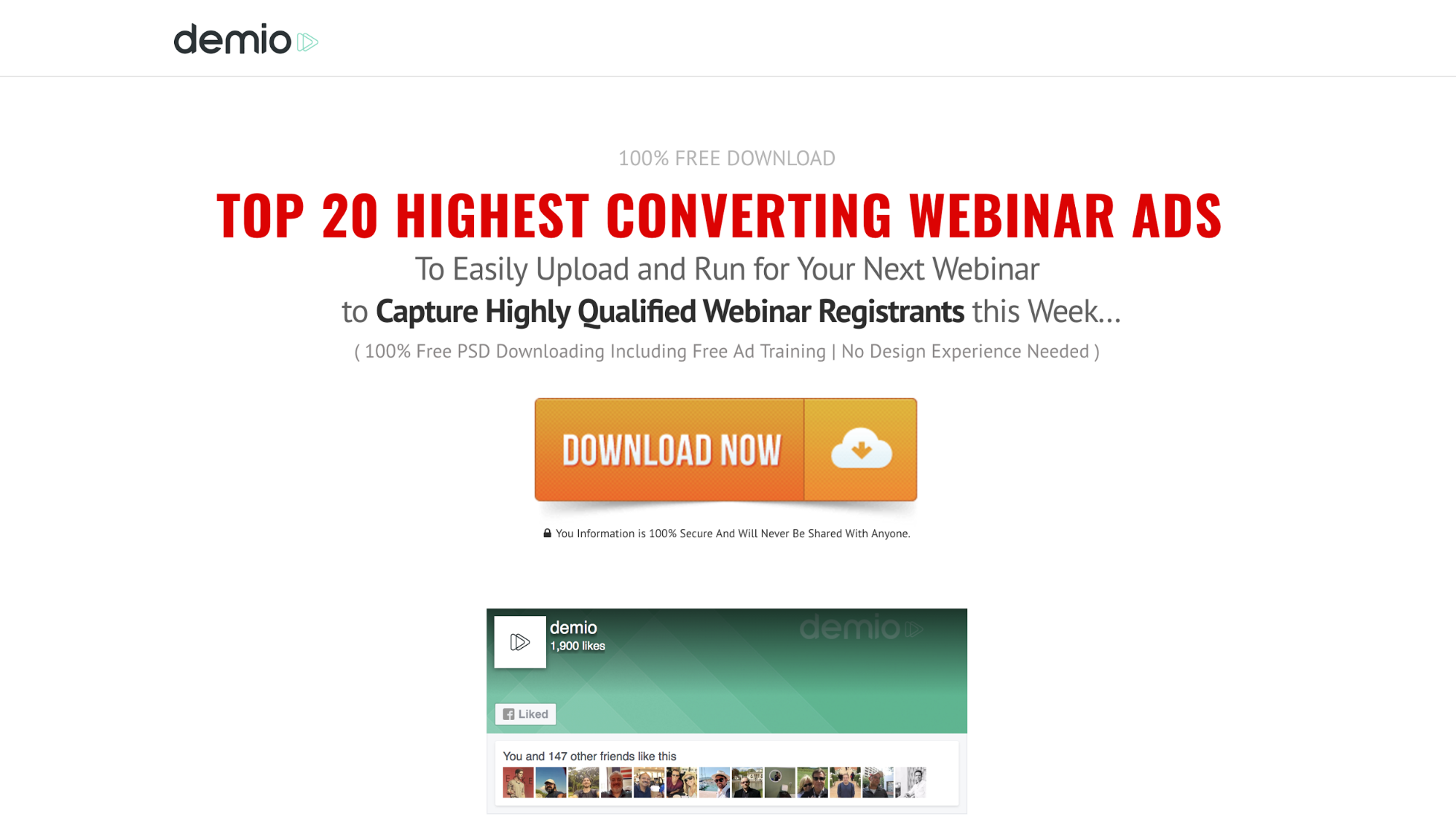
Once a contact opts in, we deliver the top 20 ad templates via an Active Campaign automation with 8 total emails:
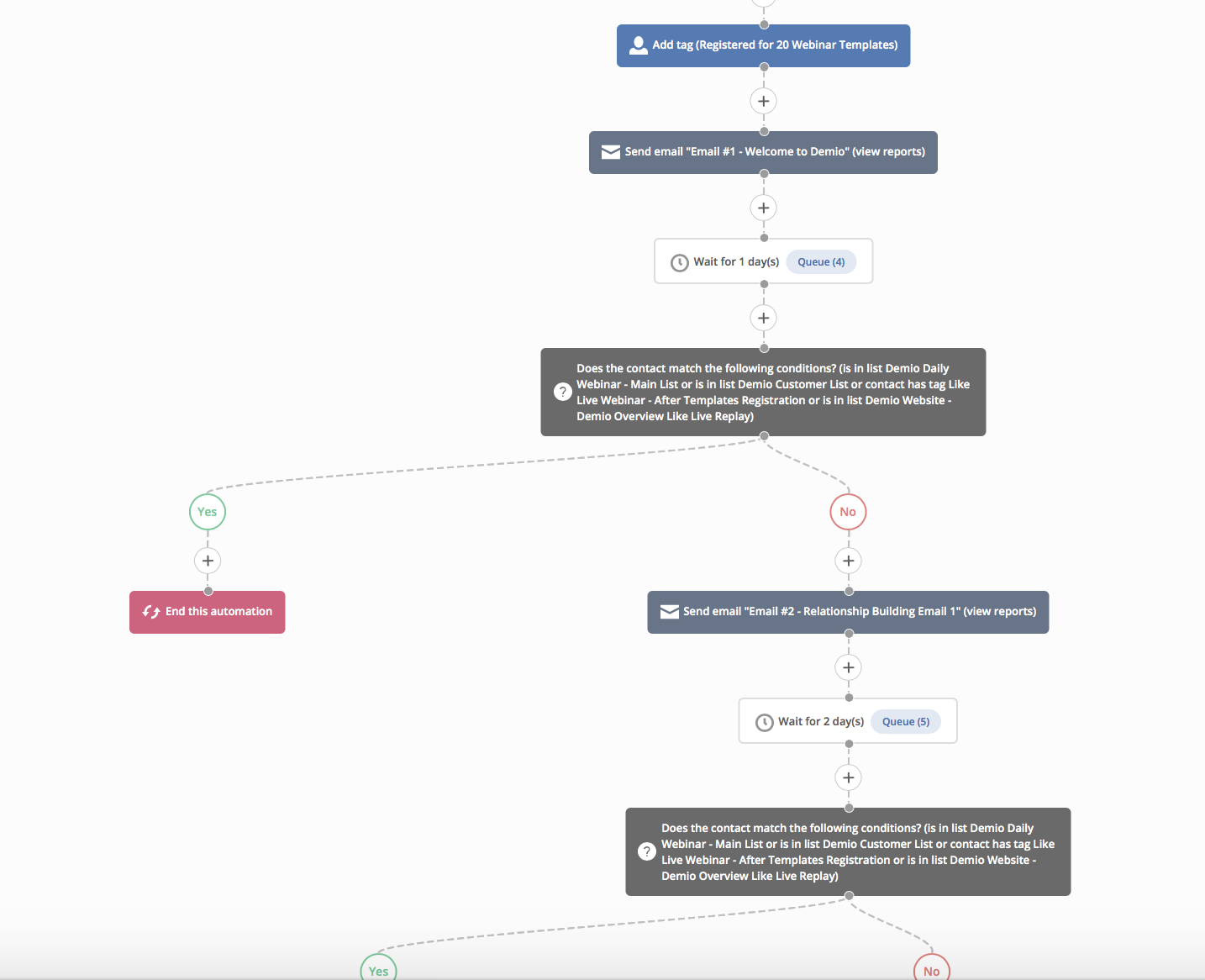
In the first email, we’re just delivering the templates and introducing Demio as a company.
In the second and third emails, we continue talking about why webinars work so well, and we push the contact towards our Like Live Replay (automated demo).
In emails four through eight, we start and continue to push our 1-on-1 demo calendar so they can sign up to get a tour.
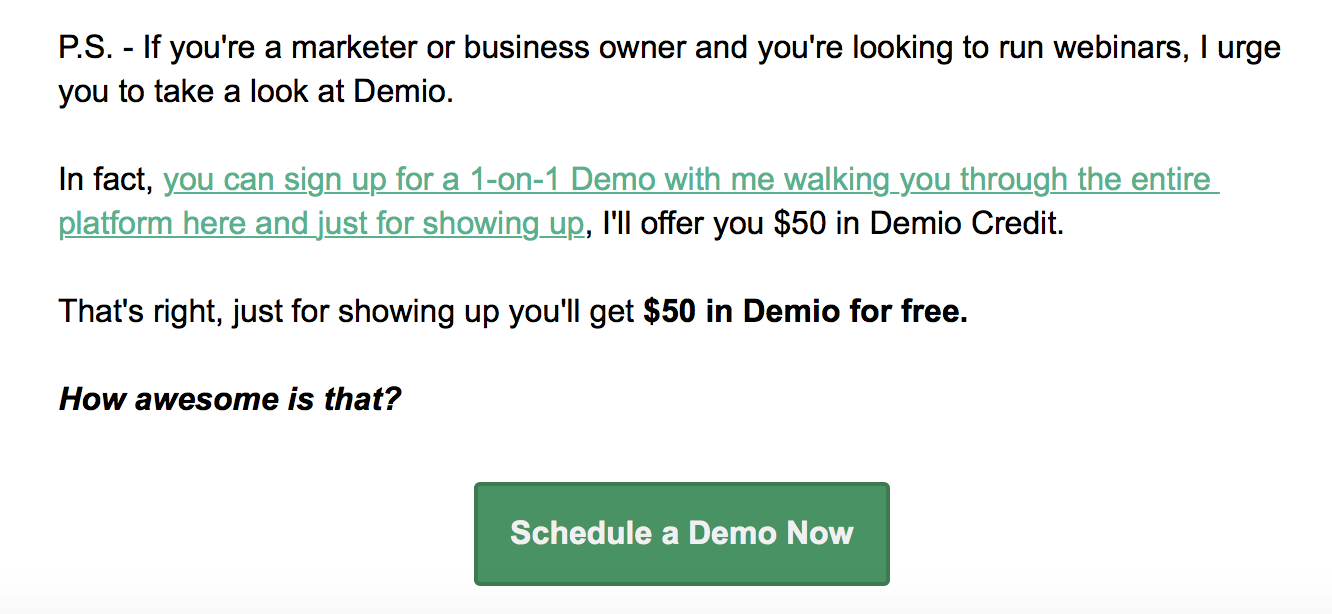
How we track demos
We’ve only recently started tracking demos, but it’s been really helpful for keeping track of our pipeline.
No crazy CRMs, just a plain Google Sheets file.
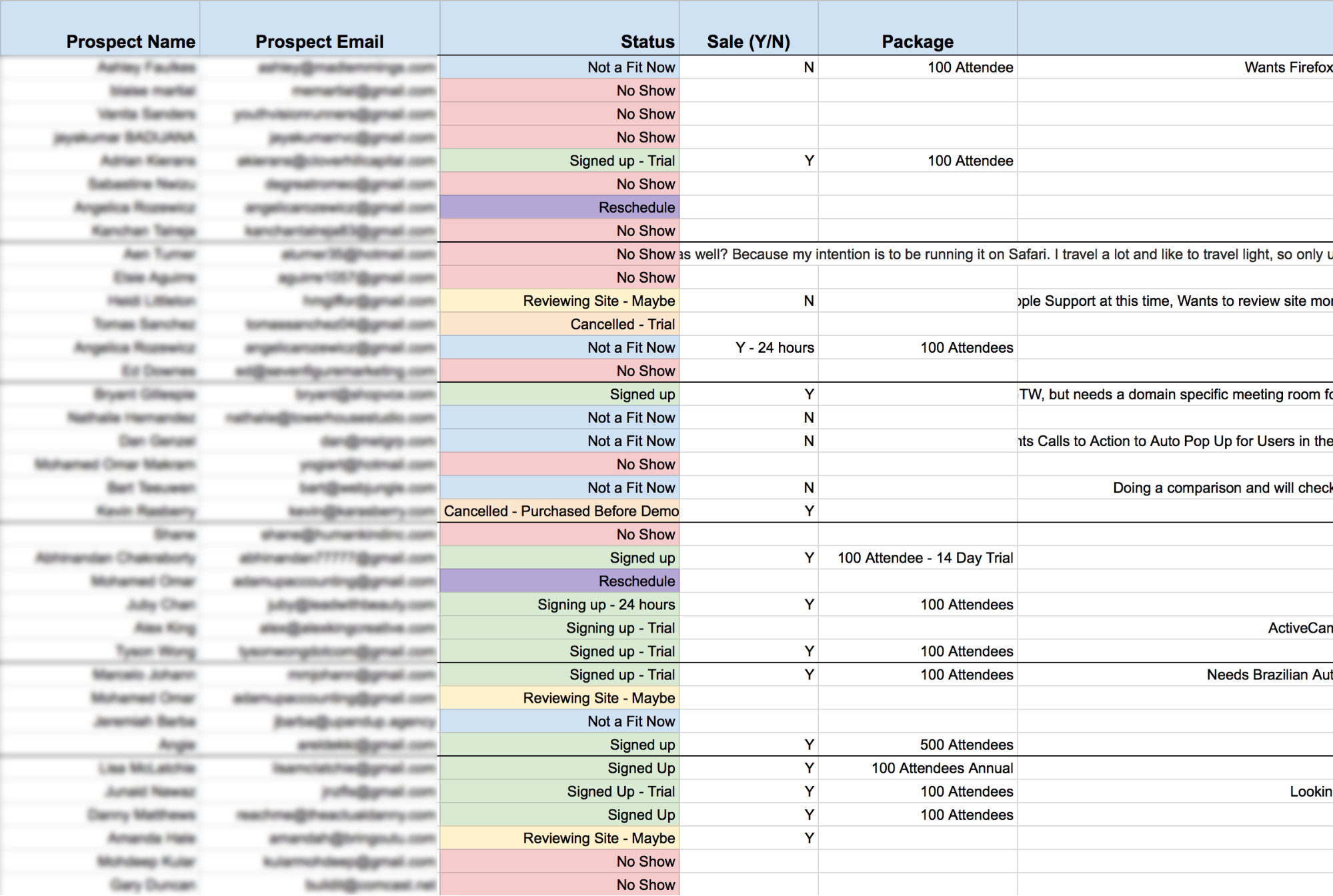
We keep track of names, emails, date of the demo, status of the demo (Signing up, Trial, No Show, Not a Fit, Rescheduled, etc.), package size if they signed up, and reason for not signing up if they didn’t.
We’re using this sheet for a couple reasons:
- If the prospect didn’t sign up because of a specific objection or feature, and we then solve that objection or add the feature, we can follow up to make the sale.
- It allows us to see some high-level reporting stats like average sign-up rate, average no-show rate, etc.
- It allows us to spot certain trends. For example, a large percentage of “Not a fit” demos might not be signing up because of one common objection. If that’s the case, we know where to focus our attention.
It’s simple. It’s basic. But it works.
We’ll most likely update this process in the future, but right now we’re closing demos at a high right, so we’re just continuing to do what works.
How we follow-up with people who missed a demo
There is a significant number of prospects who schedule a demo, then don’t show up at the scheduled time.
In an effort to talk with as many prospects as possible, we put together an email automation sequence pushing them to reschedule.

We send a series of 3 emails pushing the contact back to our Calendly page in order to grab a new time/date.
In the first email, we even include a video David recorded about how we missed them and would love to get the chance to talk.
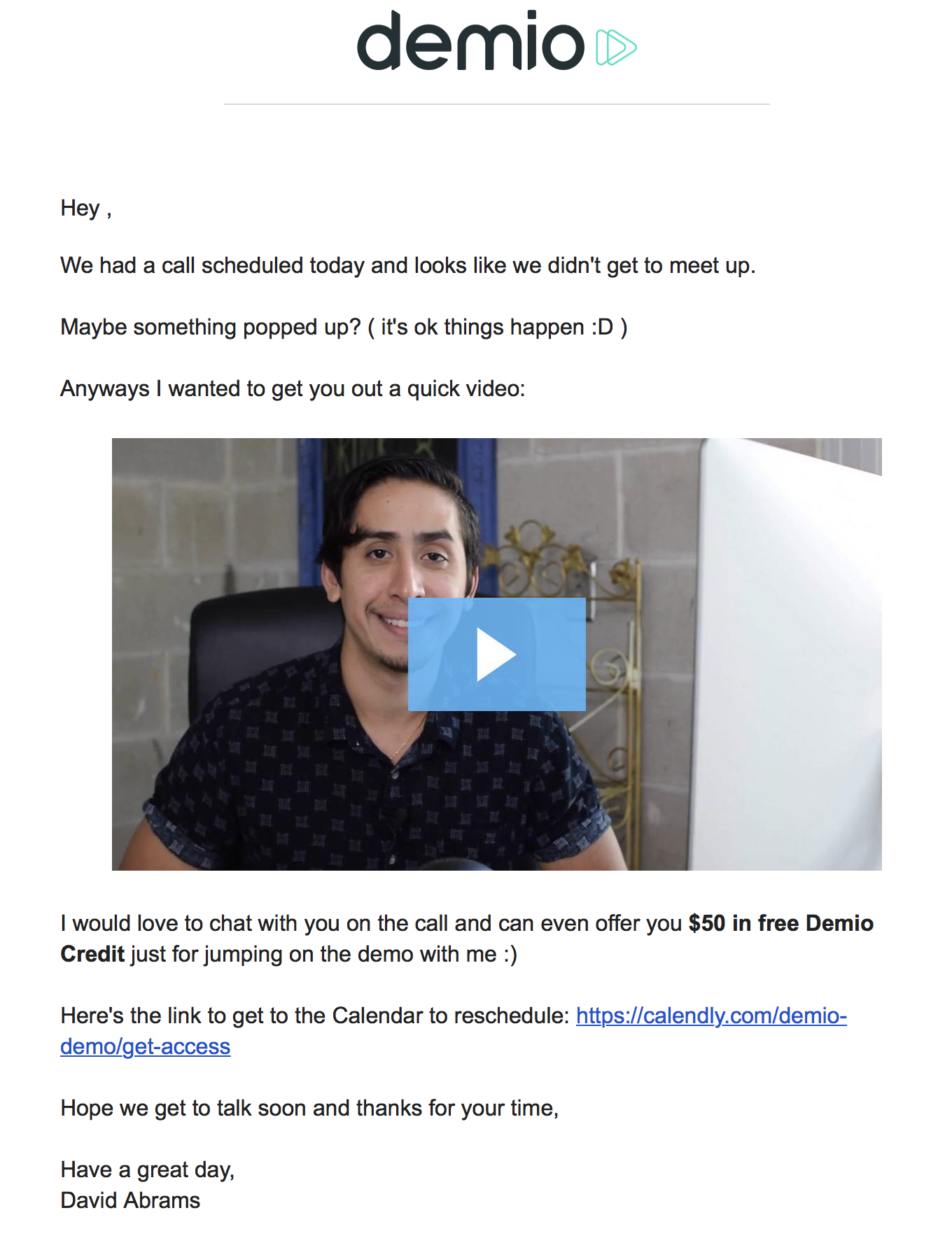
Here’s the video included in the email:

We continue to remind the prospect about the $50 credit they will receive if they take the time to show up.
This campaign has been extremely successful in getting contacts to schedule a new demo, with 40% open rate and 20% CTR on the first email alone.
Our plan with demos moving forward
We don’t plan on stopping our personal demos any time soon. As long as they allow us to keep driving new customers, we’ll keep running them.
The only downfall is that it takes up a good portion of my and David’s time. It’s hard to focus on the other million things that need attention while doing back-to-back demos during the day.
In the future, we plan on hiring a dedicated demo team member who can not only do demos, but also help us with the day-to-day support.
For now, we are focused on driving as many new demo sign ups as possible. We know that if we can get someone on a demo, there is a good chance we can get them to become a customer.
Since the majority of our demos are coming from our homepage and from our automated demo, we’re constantly looking for new inbound strategies to drive more traffic.
We’re focusing on marketing strategies that allow us to cast a wide net. A great idea would be to create a marketing website that you yourself can fill with different functions and influence brand awareness.
We’re producing more content through our blog, through this journey, through our Demio Discover interview show–all in an effort to get more eyes on Demio. We look at content as an asset that will continue to produce results over time, instead of just one time, like an advertisement.
Once we’re able to bring on a dedicated demo rep, we’ll be able to spend more of our time on the “net” marketing strategies that allow us to drive more demo sign ups.
We’ll likely also push more of our current customers towards personal demos through our onboarding messages and emails in an effort to reduce churn and build better relationships. As of right now, our personal demos are used mostly to convert new customers, but we plan on making them a large part of every step along the customer journey.
It’s an everyday grind. It’s not glamorous, and it’s certainly not your typical dreamy, hands-off software business that grows on it’s own. But it works.
